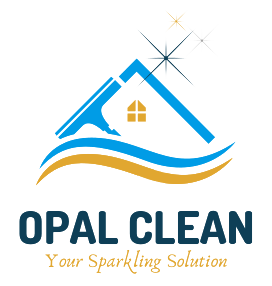The COVID-19 pandemic has reshaped the way we think about cleanliness and hygiene. Beyond the well-known methods of mask-wearing and social distancing, one crucial aspect of virus transmission that often goes overlooked is the role surfaces play in spreading the virus. In this blog post, we will delve into the science behind COVID-19 transmission via surfaces and explore effective strategies for maintaining a clean and safe environment, especially in the workplace. Contact us for COVID-19 cleaning and disinfecting.
How Does COVID-19 Spread Through Surfaces?
COVID-19 primarily spreads through respiratory droplets and aerosols released when an infected person talks, coughs, sneezes, shouts, or sings. These tiny droplets can carry the virus (SARS-CoV-2) and can land on surfaces. Additionally, saliva or nasal discharge can contaminate surfaces when an infected individual touches their face and then a surface with unwashed hands.
The virus can then be transmitted to others when they touch a contaminated surface and subsequently touch their face, particularly the mouth, nose, or eyes, with unwashed hands. The longevity of the virus on surfaces varies, ranging from a few hours to several days, depending on environmental factors like temperature and humidity.
Reducing the Risk with a Cleaning and Disinfecting Program
In workplaces, shared spaces and high-touch surfaces pose a significant risk for COVID-19 transmission. To mitigate this risk, employers should implement a thorough cleaning and disinfecting program or outsource this to a trusted company that can handle this effectively. Here are some steps to consider:
Cleaning and Disinfecting Strategies
- Incorporate Cleaning and Disinfecting in Your COVID-19 Safety Plan: Make cleaning and disinfecting a central part of your workplace’s safety plan.
- Conduct a Risk Assessment: Before adopting new cleaning and disinfecting procedures, assess the potential hazards and avoid creating new risks.
- Develop a Written Procedure: Create a written cleaning and disinfecting procedure that serves as a reference guide and training tool for your employees.
- Establish a Schedule: Implement a cleaning and disinfecting schedule that covers before, during, and after the workday.
- Maintain Records: Keep records of cleaning and disinfecting activities, whether through checklists or digital records.
- Focus on High-Touch Areas: Identify frequently touched surfaces and shared objects in your workplace, such as doorknobs, countertops, chairs, and keyboards. These areas should receive more frequent cleaning and disinfecting.
- Clean Before Disinfecting: Cleaning is the first step in the process. It involves removing debris and residues from surfaces. Cleaning alone doesn’t eliminate the virus but helps prepare the surface for disinfection.
Cleaning Methods and Considerations
When choosing cleaning methods, consider the following:
- Damp Cleaning vs. Dry Cleaning: Damp cleaning methods, like wiping with damp cloths and wet mops, are more effective at containing particles and less likely to disperse virus particles into the air.
- Cleaning Tools: Certain cleaning tools, such as brooms and pressure washers, can create air turbulence that may spread the virus. Avoid these methods when possible.
- Vacuuming: If using a vacuum indoors, ensure it has a High Efficiency Particulate Air (HEPA) filter.
Disinfecting Surfaces
Disinfection is the next critical step. It involves treating surfaces to destroy or inactivate viruses and bacteria. Here’s how to do it effectively:
- Choose the Right Disinfectant: Select a disinfectant with a Drug Identification Number (DIN) approved by Health Canada. Refer to Health Canada’s list of hard surface disinfectants effective against COVID-19.
- Clean First: Remove visible dirt from the surface before applying disinfectant. Follow the label instructions, including the recommended quantity and contact time.
- High-Touch Electronics: Pay special attention to high-touch electronics like touch screens and keyboards. Follow the manufacturer’s instructions for disinfection. If possible, use alcohol or disinfectant wipes containing at least 70% alcohol.
Using a Bleach Solution
If commercial disinfectants are unavailable, you can prepare a bleach solution to disinfect hard surfaces:
- Mix 1 Teaspoon of household bleach (5% sodium hypochlorite) with 1 Cup of water or 4 Teaspoons of household bleach with 4 Cups of water.
Safety Precautions with Bleach:
- Always add bleach to water, not the other way around.
- Label bleach solutions and use them within 24 hours, as they lose effectiveness.
- Never mix bleach with other chemicals, as it can produce toxic gases.
- Test surfaces for compatibility with bleach to prevent damage.
- Never use bleach on your skin or others.
By following these guidelines and incorporating a robust cleaning and disinfecting program into your workplace, you can significantly reduce the risk of COVID-19 transmission via surfaces. It’s essential to remain vigilant and prioritize cleanliness to keep your employees and visitors safe during these challenging times.”
Culled from Canadian Centre for Occupational health and Safety CCOHS




